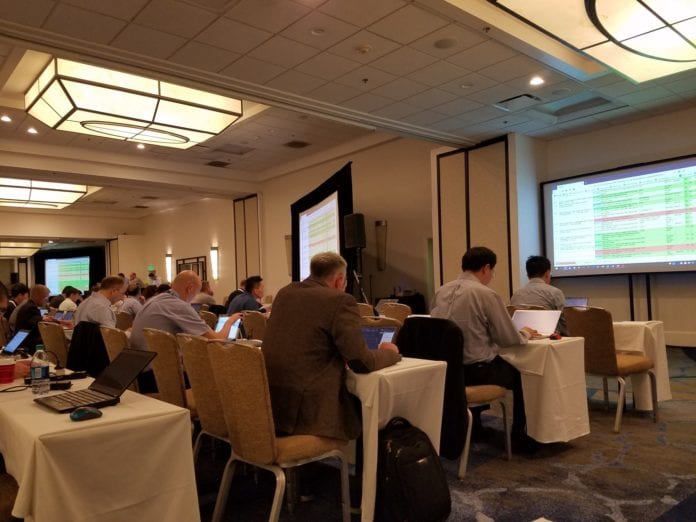Have you ever felt the joy and elation of being part of something that you have only been observing, reading, writing about, and admiring for a long time? Well, I experienced that when I became a member of 3GPP (3rd Generation Partnership Project) and attended RAN (Radio Access Network) plenary meeting #84 last week in the beautiful city of Newport Beach, California. RAN group is primarily responsible for coming up with wireless or radio interface related specifications.
The timing couldn’t be more perfect. This specific meeting was, in fact, the kick-off of 3GPP Rel. 17 discussions. I have written extensively about 3GPP and its processes on RCR Wireless News. You can read all of them here. Attending the first-ever meeting on a new release was indeed very exciting. I will chronicle the journey of Rel. 17, through a series of articles here on RCR Wireless News, and this is the first one. I will report the developments and discuss what those mean for the wireless as well as the many other industries 5G is set to touch and transform. If you are a standards and wireless junkie, get on board, and enjoy the ride.
3GPP Rel. 17 is coming at an interesting time. It is coming after the much publicized and accelerated Rel. 15 that introduced 5G, and Rel. 16 that put a solid foundation for taking 5G beyond mobile broadband. Naturally, the interest is what more 5G could do. The Rel. 17 kick-off meeting, as expected, was a symposium of great ideas, and a long wish list from prominent 3GPP members. Although many of the members submitted their proposals, only a few, selected through a lottery system, got the opportunity to present in the meeting. Nokia, KPN, Qualcomm, Indian SSO (Standard Setting Organization), and few others were among the ones who presented. I saw two clear themes in most of the proposals: First, keeping enough of 3GPP’s time and resources free to address urgent needs stemming from the nascent 5G deployments; second, addressing the needs of new verticals/industries that 5G enables.
Rel. 17 work areas
There were a lot of common subjects in the proposals. All of those were consolidated into four main work areas during the meeting:
- Topics for which the discussion can start in June 2019
- The main topics in this group include mid-tier devices such as wearables without extreme speeds or latency, small data exchange during the inactive state, D2D enhancements going beyond V2X for relay-kind of deployments, support for mmWave above 52.6 GHz, Multi-SIM, multicast/broadcast enhancements, and coverage improvements
- Topics for which the discussion can start in September 2019
- These include Integrated Access Backhaul (IAB), unlicensed spectrum support and power-saving enhancements, eMTC/NB-IoT in NR improvements, data collection for SON and AI considerations, high accuracy, and 3D positioning, etc.
- Topics that have a broad agreement that can be directly proposed as Work Items or Study Items in future meetings
- 1024 QAM and others
- Topics that don’t have a wider interest or the ones proposed by single or fewer members
As many times emphasized by the chair, the objective of forming these work areas was only to facilitate discussions between the members to come to a common understanding of what is needed. The reason for dividing them into June and September timeframe was purely for logistical reasons. This doesn’t imply any priority between the two groups. Many of the September work areas would be enhancements to items being still being worked on in Rel. 16. Also, spacing them out better spreads the workload. Based on how the discussions pan out, the work areas could be candidates for Work Items or Study Items in the December 2018 plenary meeting.
Two specific topics caught my attention. First, making 5G even more suitable for XR (AR, VR, etc.) and second, AI. The first one makes perfect sense, as XR evolution will have even stringent latency requirements and will need distributed processing capability between device and edge-cloud etc. However, I am not so sure about AI. I don’t how much scope there is to standardize AI, as it doesn’t necessarily require interoperability between devices of different vendors. Also, I doubt companies would be interested in standardizing AI algorithms, which minimizes their competitive edge.
Apart from technical discussions, there were questions and concerns regarding following US Government order to ban Huawei. This was the first major RAN plenary meeting after the executive order imposing the ban was issued. From the discussions, it seemed like “business as usual.” We will know the real effects when the detailed discussions start in the coming weeks.
On a closing note, many compare the standardization process to watching a glacier move. On the contrary, I found it to be very interesting and amusing, especially how the consensus process among the competitors and collaborates work. The meeting was always lively, with a lot of arguments and counter-arguments. We will see whether my view changes in the future! So, tune in to updates from future Rel. 17 meetings to hear about the progress.

